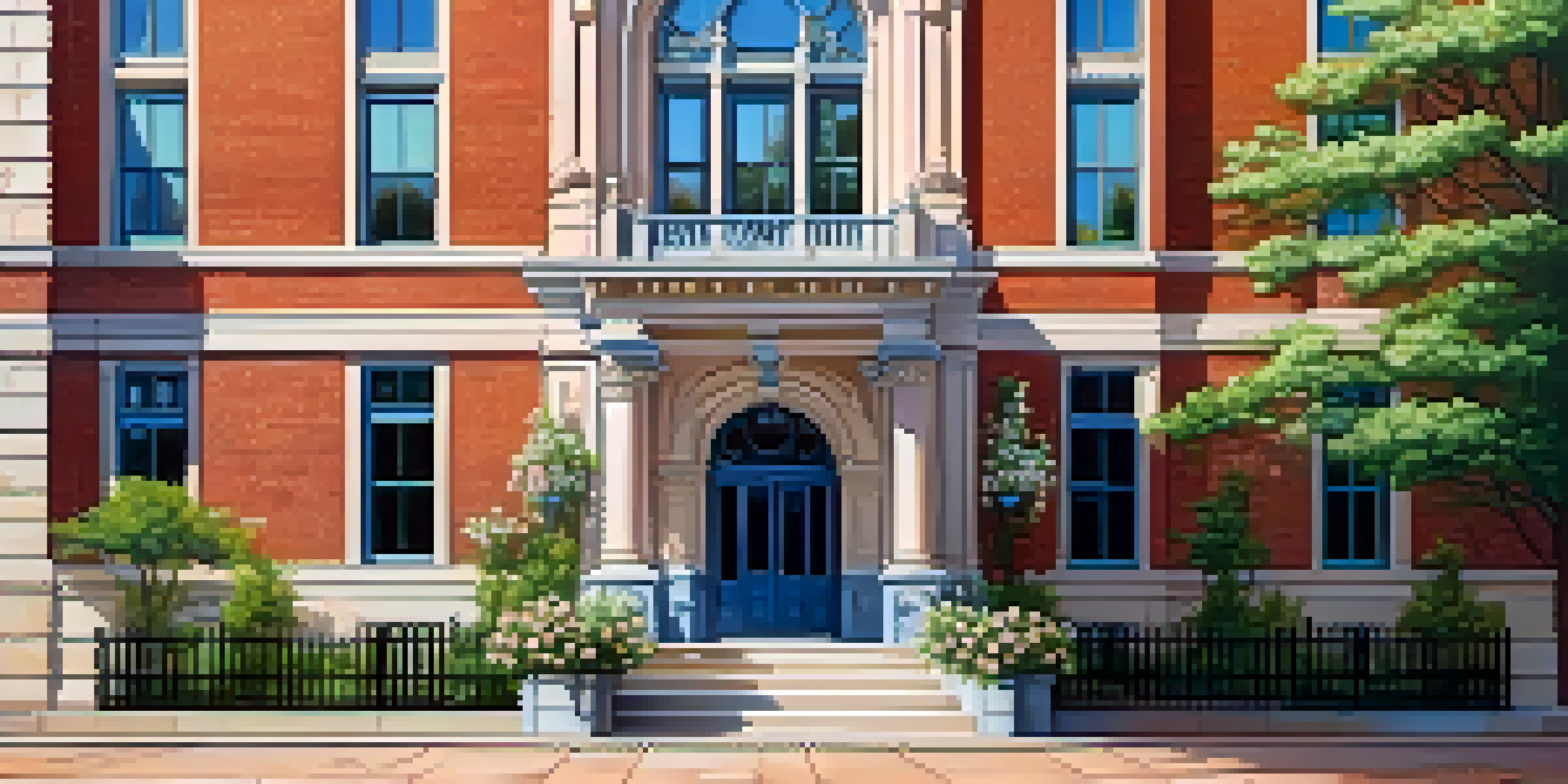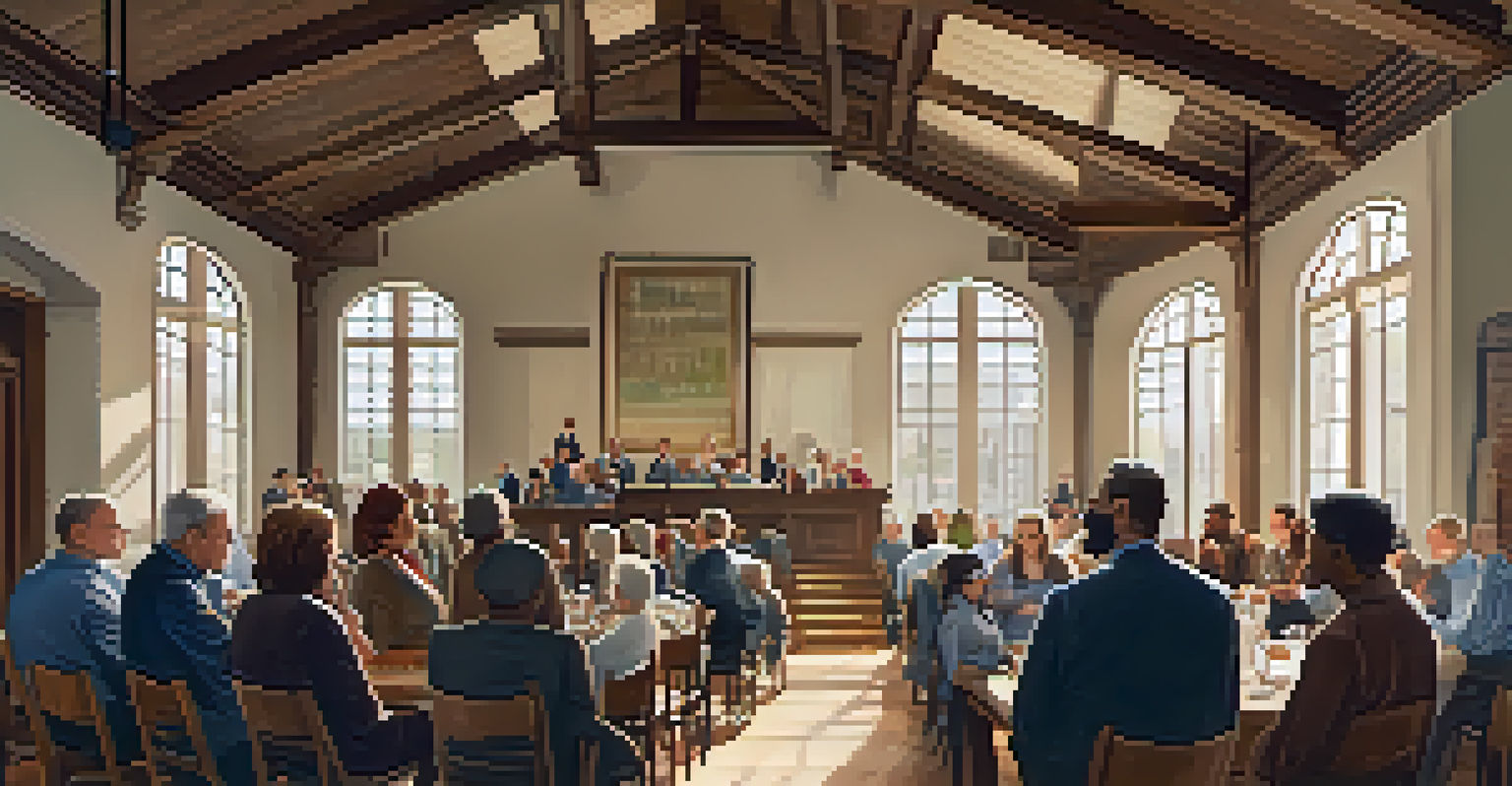Funding Options for Historic Property Renovations

Understanding the Importance of Historic Property Renovation
Renovating historic properties preserves our architectural heritage, allowing future generations to appreciate the past. These buildings often tell a story, reflecting the culture and history of their time. By restoring them, we not only maintain their beauty but also contribute to community identity and pride.
Preservation is a form of activism, and the best way to honor the past is to use it in service of the future.
Moreover, many historic properties are often located in desirable areas, which makes them valuable real estate. Investing in their renovation can increase property values and stimulate local economies. This economic boost can benefit surrounding businesses and create job opportunities in the community.
However, tackling a renovation project can be daunting, especially when it comes to financing. Understanding the various funding options available is crucial for property owners looking to breathe new life into these treasured buildings.
Government Grants for Historic Renovations
One of the most accessible funding options for historic property renovations comes from government grants. Various federal, state, and local programs offer financial assistance to help restore and preserve historic sites. These grants often have specific requirements, such as maintaining the building's historical integrity, but can significantly reduce renovation costs.

For example, the National Park Service administers the Historic Preservation Fund, which provides grants to support preservation efforts. Additionally, many states have their own grant programs, which can be found through state historic preservation offices. It’s essential to research and apply early, as these funds can be highly competitive.
Funding Options for Renovations
Various funding options, including grants, tax incentives, and loans, are available to support historic property renovations.
While grants are a fantastic resource, they often come with strings attached, including reporting requirements and regulations. Therefore, it’s vital to understand the grant guidelines thoroughly to ensure compliance throughout the renovation process.
Tax Incentives for Renovating Historic Properties
Tax incentives can be a game-changer for property owners looking to renovate historic buildings. The federal Historic Preservation Tax Incentives program offers a 20% tax credit for the rehabilitation of income-producing historic properties. This can significantly offset renovation costs and make projects more financially viable.
Historic preservation is not about saving old buildings; it’s about saving the values and stories they represent.
In addition to federal credits, many states and local governments offer their own tax incentives. These can include property tax abatements or sales tax exemptions on materials used in the renovation. By taking advantage of these incentives, owners can save a substantial amount on their overall renovation budget.
It’s important to note that to qualify for these tax incentives, the renovation must meet specific criteria. This often includes adhering to the Secretary of the Interior’s Standards for Rehabilitation, which ensures that the historical aspects of the property are preserved.
Low-Interest Loans for Historic Renovation Projects
Low-interest loans can provide the necessary funding for property owners who may not qualify for grants or tax incentives. Many community development financial institutions (CDFIs) and non-profit organizations offer loan programs specifically for historic property renovations. These loans often have favorable terms, making it easier to manage repayment.
For instance, the Federal Housing Administration (FHA) offers the 203(k) loan program, which allows homeowners to finance both the purchase and renovation of a historic property. This can be particularly advantageous for those looking to buy and restore a property in one go. Additionally, some states have initiated their own loan programs geared toward historic preservation.
Community Engagement is Key
Building community support through crowdfunding and partnerships with local organizations enhances funding success for renovation projects.
While low-interest loans can ease the financial burden, it’s crucial to consider the long-term implications of borrowing. Property owners should carefully assess their ability to repay the loan while managing renovation costs.
Crowdfunding as a Modern Funding Solution
Crowdfunding has emerged as a popular and innovative way to fund historic property renovations. Through platforms like Kickstarter or GoFundMe, property owners can share their renovation stories and rally support from the community. This not only helps raise funds but also builds a network of supporters who care about the preservation of local history.
Successful crowdfunding campaigns often leverage social media to reach a wider audience. Sharing engaging photos, videos, and personal anecdotes can draw potential donors in, making them feel connected to the project. This sense of community involvement can lead to a more successful fundraising outcome.
However, crowdfunding requires significant effort in marketing and communication. Property owners must be prepared to promote their project and engage with potential backers consistently. A well-thought-out campaign can make all the difference in achieving funding goals.
Partnerships with Non-Profits and Preservation Societies
Partnering with non-profit organizations and preservation societies can provide valuable resources for historic property renovations. Many of these organizations offer grants, technical assistance, and volunteer support for renovation projects. By collaborating with them, property owners can tap into a wealth of knowledge and experience.
For example, organizations like the National Trust for Historic Preservation often have programs designed to support local preservation efforts. They can provide guidance on best practices for restoration and connect property owners with skilled tradespeople who specialize in historic renovations. This partnership can help ensure that the project aligns with preservation standards.
Preserving Heritage Enriches Communities
Investing in historic property renovations not only maintains architectural beauty but also fosters community pride and identity.
Additionally, non-profits may also assist in fundraising efforts by organizing events or campaigns specific to the renovation project. This collaborative approach can enhance community engagement and secure more funding than a property owner could achieve alone.
Community Development Programs and Local Initiatives
Many communities have development programs aimed at revitalizing historic areas, which can be a fantastic source of funding for renovations. Local governments often prioritize historic preservation as part of their economic development strategies, providing grants or low-interest loans to property owners. Engaging with these programs can lead to beneficial partnerships and funding opportunities.
For instance, some cities have established Main Street programs that focus on revitalizing downtown districts, often including historic buildings. These initiatives may offer funding for façade improvements, accessibility upgrades, and other renovations that enhance the building's appeal and functionality.

It’s essential for property owners to stay informed about local initiatives and funding opportunities. Attending community meetings or connecting with local planning departments can provide insight into available resources and how to apply for them.
Conclusion: Navigating the Funding Landscape for Renovations
Navigating the funding landscape for historic property renovations can seem overwhelming at first, but knowing your options can make a significant difference. From government grants to crowdfunding, there are numerous avenues to explore that can help turn renovation dreams into reality. Each funding source has its own set of requirements and benefits, making it essential to do thorough research.
Property owners should take the time to assess their financial needs and align them with the appropriate funding options. Combining multiple sources—such as grants, loans, and local initiatives—can often yield the best results. Additionally, engaging with local preservation organizations can provide invaluable support and guidance throughout the renovation process.
Ultimately, investing in historic property renovations not only preserves our heritage but also enriches our communities. With the right funding and a commitment to restoration, these precious buildings can continue to tell their stories for generations to come.